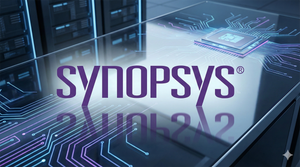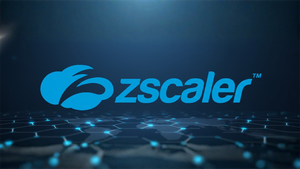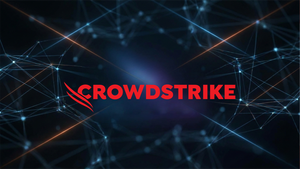SHELTON, CT / ACCESSWIRE / February 15, 2023 / NanoViricides, Inc. (NYSE American:NNVC) (the "Company"), reports that it has filed its Quarterly Report on Form 10-Q for the fiscal first quarter ending December 31, 2022 with the Securities and Exchange Commission (SEC) on Tuesday, February 14, 2023. The report can be accessed at the SEC website (https://www.sec.gov/ix?doc=/Archives/edgar/data/1379006/000141057823000129/nnvc-20221231x10q.htm).
We reported that, as of December 31, 2022, we had cash and cash equivalent current assets balance of approximately $11.5 Million. In addition, we reported approximately $8.4 Million in Property and Equipment (P&E) assets, net of depreciation and amortization from $14.7 Million in P&E assets before depreciation. The strong P&E assets comprise our cGMP-capable manufacturing and R&D facility in Shelton, CT. The total current liabilities were approximately $0.46 Million. In comparison, as of September 30, 2022, we had cash and cash equivalent current assets balance of approximately $13.1 Million and total current liabilities were approximately $0.51 Million. The net cash utilized in the six months from July 1, 2022 was approximately $3.3 Million. The cash expenditure is expected to increase once clinical trials begin for NV-CoV-2, our lead drug candidate to treat SARS-CoV-2 infection that causes COVID-19.
We estimate that we have sufficient funds to complete initial human clinical trials for our lead drug candidate NV-CoV-2 for the treatment of SARS-CoV-2 infection that causes the COVID-19 disease and also "long COVID."
In the reported quarter, we have been compiling and performing medical writings needed for developing an IND application to the US FDA for human clinical trials of NV-CoV-2 in COVID-19 patients. We have also been compiling and performing medical writings that would be needed for international applications for clinical trials under the ICH and regulatory guidelines of certain countries.
As a result, a clinical trial application for evaluation of oral administration of NV-CoV-2, as well as most of the associated agreements have been completed for one of our initiatives outside the USA. We expect to announce the resulting collaborations once the formal steps are completed.
In addition, significantly, we have begun the manufacture of clinical supply of the drug substance NV-387.
It is expected that our current 5Kg API manufacturing scale would be sufficient to treat approximately 1,000 patients, although the actual required dose for efficacy will only be established in clinical trials.
We have developed three separate drug product formulations of NV-387 for the treatment of COVID-19 patients: (i) NV-CoV-2 Oral Gummies, a fixed-dose form for use in mild to moderate out-patient treatment; (ii) NV-CoV-2 Oral Syrup, the dosing quantity of which can be adjusted, as is needed in the case pediatric patients (based on body weight); and (iii) NV-CoV-2 Solution (Sterile) for Injection, Infusion, and Inhalation.
In the reported quarter, we successfully designed and had externally fabricated custom filling, packaging, and sealing equipment for the oral syrup and oral gummies formulations at the clinical batch scale. We plan on having the NV-CoV-2 Injectable formulation made and packaged at an external contract manufacturer.
Thus, NanoViricides is rapidly becoming one of very few small pharma companies that are fully "vertically integrated" ("vertically integrated" refers to having capabilities from drug discovery R&D to manufacturing and packaging of drug products in house).
We believe that NV-CoV-2 addresses the unmet need for a safe and effective treatment that can be used in otherwise healthy patients as well as in children, based on its strong safety and effectiveness observed in animal studies. The currently available antivirals have limited applicability and effectiveness. Molnupiravir (Merck/Ridgeback) is severely restricted due to its mutagenicity and poor efficacy and unfavorable risk vs. benefit profile. Paxlovid (Pfizer) was found to be not effective in patients below 65 years of age and without co-morbidities. Remdesivir requires infusion and is limited to use in hospitalized patients with severe disease.
NV-CoV-2 as oral syrup or oral gummies is expected to be useful for patients in all age ranges and patients with or without co-morbidities experiencing mild to moderate COVID-19.
NV-CoV-2 Solution for Injection, Infusion, and Inhalation is designed to help severely ill hospitalized patients.
We believe escape of new variants of SARS-CoV-2 from our drug NV-CoV-2 is highly unlikely. This is because we developed NV-CoV-2 as a broad-spectrum, pan-coronavirus drug that is active not only against SARS-CoV-2, but also against other unrelated coronaviruses. We believe this is exactly the kind of drug that is needed to combat the pandemic effectively and to be able to live with the virus, as a global society, as the SARS-CoV-2 virus is moving towards an endemic phase.
We believe that NV-CoV-2 works by a novel mechanism of action; that of blocking the re-infection cycle of the viral disease. We believe that NV-CoV-2 not only binds to the virus, but fuses with the virus surface, uprooting the glycoproteins that are required for the virus to bind to the human cell (S protein, and its products S1 and S2 proteins), thereby rendering the virus incapable of infecting a cell. In contrast, antibodies are only capable of decorating the virus, generally incompletely.
Previously, the Company has completed preclinical development of its lead drug candidate for the treatment of shingles rash, namely, NV-HHV-1. The Company intends to re-engage this program towards clinical trials for NV-HHV-1 regulatory approvals after our COVID-19 program.
The nanoviricide platform technology is a leading nanomedicine technology that uniquely enables attack on both (a) the virus particles outside cells and (b) the replication of virus inside cells. If both of these factors can be controlled effectively, then the resulting drug could be a cure for the viral disease. In contrast, antibodies only bind to the virus particles outside cells, and tag them for the immune system for further processing, whereas antiviral small chemical drugs affect only the replication cycle of the virus inside cells.
The virus-recognition ligand in NV-387 is designed to mimic certain features of heparan-sulfate proteoglycans (HSPG) and related glycosaminoglycans (GAG). HSPG serve as the initial attachment and concentration site for a large number of viruses, and also may serve as cellular entry sites for some viruses. Thus NV-387 is likely to have applicability in treating not just coronaviruses, but some other viral infections as well.
We have begun the process of expanding the use spectrum of NV-387 which would greatly expand the return on investment (ROI). To this end, we have recently initiated two new programs in response to public health threats: (a) nanoviricides to treat Poxvirus infections (the Mpox epidemic previously known as MonkeyPox); and (b) nanoviricides to treat enteroviral infections. Enterovirus EV-D68, causes a pediatric disease called acute flaccid myelitis (AFM) that can lead to paralysis (AFP) in a small number of children. Poliovirus is also an enterovirus, and recently has been detected primarily in New York area.
Our anti-viral therapeutics, that we refer to as "nanoviricides®" are designed to mimic and look to the virus like the native host cell surface to which it binds. We believe that our drug candidates would be difficult for a virus to escape because these binding sites for a given virus do not change despite mutations and other changes in the virus. Further, we believe that our drugs will be broad-spectrum, i.e. effective against most if not all strains, types, or subtypes, of a given virus, provided the virus- binding portion of the nanoviricide is engineered appropriately.
The nanoviricide platform is designed to additionally hold small molecule active pharmaceutical ingredients (API's) of different types in its "belly". This allows targeted delivery of the encapsulated API to infected cells, and is also expected to improve the pharmacokinetic and pharmacodynamic properties of the API, such as rapid metabolism. Rapid metabolism is known to be an effectiveness-limiting factor for many drugs, including remdesivir. Remdesivir, developed by Gilead, is a drug that interferes with the replication of the SARS-Cov-2 virus and has been approved under emergency use regulations in the USA as well as in many other countries.
NanoViricides, Inc. (the "Company") (www.nanoviricides.com) is a development stage company that is creating special purpose nanomaterials for antiviral therapy. The Company's novel nanoviricide® class of drug candidates are designed to specifically attack enveloped virus particles and to dismantle them. Our lead drug candidate is NV-CoV-2 for the treatment of COVID-19 disease caused by SARS-CoV-2 coronavirus. Our other advanced candidate is NV-HHV-1 for the treatment of Shingles (previously referred to as NV-HHV-101). The Company cannot project an exact date for filing an IND for any of its drugs because of dependence on a number of external collaborators and consultants. The Company is currently focused on advancing NV-CoV-2 into Phase I/II human clinical trials.
NV-CoV-2 is our nanoviricide drug candidate for COVID-19 that does not encapsulate remdesivir. NV-CoV-2-R is our other drug candidate for COVID-19 that is made up of
NV-CoV-2 with remdesivir encapsulated within its polymeric micelles. The Company believes that since remdesivir is already US FDA approved, our drug candidate encapsulating remdesivir is likely to be an approvable drug, if safety is comparable. Remdesivir is developed by Gilead. The Company has developed both of its own drug candidates NV-CoV-2 and NV-CoV-2-R independently.
The Company is also developing drugs against a number of viral diseases including oral and genital Herpes, viral diseases of the eye including EKC and herpes keratitis, H1N1 swine flu, H5N1 bird flu, seasonal Influenza, HIV, Hepatitis C, Rabies, Dengue fever, and Ebola virus, among others. NanoViricides' platform technology and programs are based on the TheraCour® nanomedicine technology of TheraCour, which TheraCour licenses from AllExcel. NanoViricides holds a worldwide exclusive perpetual license to this technology for several drugs with specific targeting mechanisms in perpetuity for the treatment of the following human viral diseases: Human Immunodeficiency Virus (HIV/AIDS), Hepatitis B Virus (HBV), Hepatitis C Virus (HCV), Rabies, Herpes Simplex Virus (HSV-1 and HSV-2), Varicella-Zoster Virus (VZV), Influenza and Asian Bird Flu Virus, Dengue viruses, Japanese Encephalitis virus, West Nile Virus, Ebola/Marburg viruses, and certain Coronaviruses. The Company intends to obtain a license for poxviruses and/or enteroviruses if the initial research is successful. The Company's technology is based on broad, exclusive, sub-licensable, field licenses to drugs developed in these areas from TheraCour Pharma, Inc. The Company's business model is based on licensing technology from TheraCour Pharma Inc. for specific application verticals of specific viruses, as established at its foundation in 2005.
As is customary, the Company must state the risk factor that the path to typical drug development of any pharmaceutical product is extremely lengthy and requires substantial capital. As with any drug development efforts by any company, there can be no assurance at this time that any of the Company's pharmaceutical candidates would show sufficient effectiveness and safety for human clinical development. Further, there can be no assurance at this time that successful results against coronavirus in our lab will lead to successful clinical trials or a successful pharmaceutical product.
This press release contains forward-looking statements that reflect the Company's current expectation regarding future events. Actual events could differ materially and substantially from those projected herein and depend on a number of factors. Certain statements in this release, and other written or oral statements made by NanoViricides, Inc. are "forward-looking statements" within the meaning of Section 27A of the Securities Act of 1933 and Section 21E of the Securities Exchange Act of 1934. You should not place undue reliance on forward-looking statements since they involve known and unknown risks, uncertainties and other factors which are, in some cases, beyond the Company's control and which could, and likely will, materially affect actual results, levels of activity, performance or achievements. The Company assumes no obligation to publicly update or revise these forward-looking statements for any reason, or to update the reasons actual results could differ materially from those anticipated in these forward-looking statements, even if new information becomes available in the future. Important factors that could cause actual results to differ materially from the company's expectations include, but are not limited to, those factors that are disclosed under the heading "Risk Factors" and elsewhere in documents filed by the company from time to time with the United States Securities and Exchange Commission and other regulatory authorities. Although it is not possible to predict or identify all such factors, they may include the following: demonstration and proof of principle in preclinical trials that a nanoviricide is safe and effective; successful development of our product candidates; our ability to seek and obtain regulatory approvals, including with respect to the indications we are seeking; the successful commercialization of our product candidates; and market acceptance of our products.
FDA refers to US Food and Drug Administration. IND application refers to "Investigational New Drug" application. cGMP refers to current Good Manufacturing Practices. CMC refers to "Chemistry, Manufacture, and Controls". CHMP refers to the Committee for Medicinal Products for Human Use, which is the European Medicines Agency's (EMA) committee responsible for human medicines. API stands for "Active Pharmaceutical Ingredient".
Contact:
NanoViricides, Inc.
info@nanoviricides.com
Public Relations Contact:
MJ Clyburn
TraDigital IR
clyburn@tradigitalir.com
SOURCE: NanoViricides, Inc.
View source version on accesswire.com:
https://www.accesswire.com/739430/NanoViricides-Has-Filed-its-Quarterly-Report--Company-has-Begun-Production-of-Coronavirus-Drug-for-Clinical-Trials






